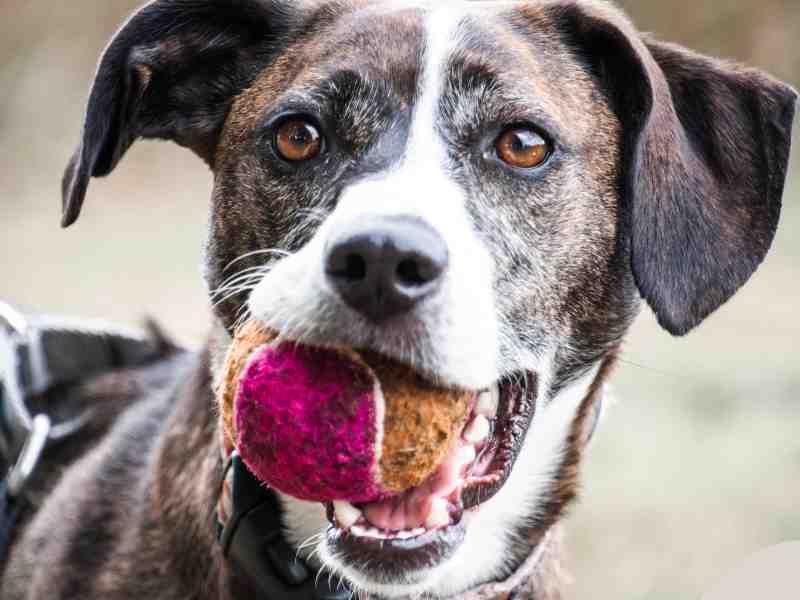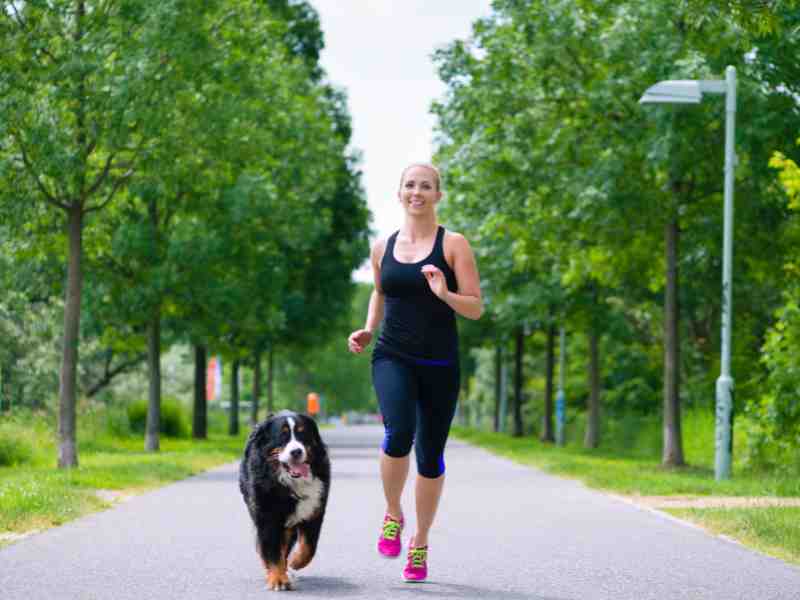Mobility is fundamental to your dog’s life. It’s what allows them to explore their world, enjoy playtime, and live comfortably. But not all exercises are beneficial for maintaining or improving this really important aspect of their health. The impact of an exercise regime on a dog’s mobility can vary greatly—it can (and should) support their ability to move freely, but if not managed correctly, it can contribute to mobility issues.
Decoding Dog Mobility: More Than Just a Walk in the Park
When we talk about canine mobility, we’re basically talking about how our best friends move and groove. Dog mobility is all about those zoomies, walks in the park, and each leap they take for that almost-too-high frisbee. Mobility is the backbone of your dog’s physical health and the VIP pass to their overall happiness and quality of life.
The thing is, mobility isn’t just about the ability to move; it’s about moving well. Good mobility means your dog can perform all those feats and day-to-day natural movements without pain, stiffness, or difficulty. It’s what allows them to slink onto the couch with ninja-like finesse or take the dog park head-on for adventure after adventure.
What Makes Dog Mobility Take A Hit?
So, what exactly is it that hinders dog mobility? Why can’t your dog stand comfortably? Why do their front legs shake or maybe not stretch like they used to or should? Why does your dog’s body suddenly not seem to have the range of motion it once did? Why does your dog seem overly tired? Why does your dog’s ability to find joy on those night-time walks seem to be gone? There are a lot of things that could make those not-so-smooth moves be the norm, but there are a few common dog mobility issues that are often to blame.
- Arthritis: This isn’t just a human thing; dogs get it, too. Think of it as the rusting of their joints, where wear and tear meet inflammation, leading to pain and reduced mobility. It’s like trying to dance with shoes made of lead – not fun, right? Your dog doesn’t think so either, and it can really affect a senior dog, or large dogs, who are already prone to arthritis.
- Hip Dysplasia: This is basically a design flaw in the ball and socket joint of your dog’s hip. It’s often inherited or common in certain breeds, and can make every step your dog takes a challenge. It’s like wearing a pair of jeans that just don’t fit, no matter how you move.
- Age-Related Decline: Just like humans, dogs can’t dodge the aging bullet. Over time, their joints wear just down, muscles may weaken, and they might not be the young and spry puppies they once were. You know how sometimes it takes you a minute to get up from that comfy chair? It’s similar for them, and a lot is age-related joint degeneration.
The Role of Exercise in Supporting Canine Mobility
So then, we like to think of exercise for dogs like tuning a guitar: just the right amount keeps everything in perfect harmony. Regular, well-suited exercise boosts your dog’s mobility by strengthening their muscles, keeping their joints nimble, and managing their weight. This kind of movement helps prevent stiffness and discomfort in many dogs associated with underuse or age.
It’s important to note that not all exercises are created equal. Beneficial ones, like swimming or brisk walking, are kind on the joints and great for their cardiovascular health without overdoing it. On the other hand, activities and exercises involving a lot of jumping or hard running on pavement might be too hard on your dog’s body, especially for breeds prone to joint issues or senior dogs. The key to good dog mobility exercises is balance and knowing your dog’s limits—keeping them active but not overworked.
Dog Exercise For Mobility: Is Your Dog’s Exercise Routine Right?
It’s a good idea to look at your dog’s exercise routine and really evaluate their activities. Understanding how these impact their mobility and overall health can help you create a routine that’s just right for them. Typical exercise routines for dogs can range from leisurely walks to more vigorous activities like fetch or agility training. Walking, for example, provides gentle, consistent exercise that supports joint health and muscle strength, crucial for mobility. In contrast, activities with high impact or repetitive motions may put undue stress on joints, potentially leading to issues like arthritis or exacerbating existing conditions.
Signs of an overly strenuous routine include reluctance to engage in previously enjoyed activities, visible discomfort during or after exercise, and any change in gait or mobility. Tailoring exercise to your dog’s specific needs, considering factors such as age, breed, and health status, is key to supporting their mobility and avoiding injury.
So, what are the ideal exercises for enhancing dog mobility? To recap, they include:
- Walking: Start with short, gentle walks to keep joints moving. Gradually increase the distance as your dog builds stamina, ensuring it’s low-impact and enjoyable.
- Swimming: Excellent for dogs, especially those with arthritis or recovering from surgery. It’s a non-weight-bearing activity that reduces stress on joints while strengthening muscles.
- Strengthening Exercises: Incorporate exercises that strengthen the core and limbs. Balance exercises, like standing on an uneven surface (e.g., a cushion), can improve stability.
For puppies, focus on short, playful activities that don’t overstrain developing joints. Senior dogs benefit from gentle walks and swimming. Breeds prone to joint issues may require specific exercises to strengthen certain areas without adding stress. Always consider your dog’s health status and consult with a vet to design the best exercise plan.
Common Mistakes In Dog Mobility Exercise Routines
Two common mistakes in canine exercise routines are over-exercising and under-exercising. Finding the right balance is key to ensuring your dog stays healthy without putting undue stress on their body. Over-exercising can lead to exhaustion and injuries, while under-exercising may result in weight gain and decreased mobility. It’s also important to pay attention to signs of discomfort or pain during exercise, such as limping or reluctance to move, as these can indicate that the exercise is too intense or inappropriate for your dog’s current health status.
Integrating Mobility Support into Your Dog’s Routine: Bernie’s Marvelous Mobility
Exercise is a great start to keeping your dog in great shape, but we’ve seen firsthand that it’s only part of the picture, especially for dogs that aren’t naturally inclined to dig exercise. That’s why we came up with Bernie’s Marvelous Mobility. We’ve packed these chews with stuff like Omega-3s and undenatured type-II collagen, which are great for joint health, but unlike many other joint health supplements for dogs, we additionally made sure to add ingredients that support gut health. Why? Because we know a healthy gut helps with nutrient absorption, which is super important for maintaining healthy joints and overall vitality.
And we didn’t stop there. We’ve used the latest science to include antioxidants, anti-inflammatories, and specific vitamins. We do this because we want to help every part of your dog, not just their mobility. Our approach is unique; we’ve seen how gut health is seriously linked to how well a dog moves and feels, and we’re not swayed by what’s popular–but instead by what WORKS for dog mobility and joint health.
By focusing on this, we’re aiming to help dogs get through their day and live their lives to the fullest. Bernie’s Marvelous Mobility chews are about supporting a lifestyle, one that has healthy dogs living happy lives!


